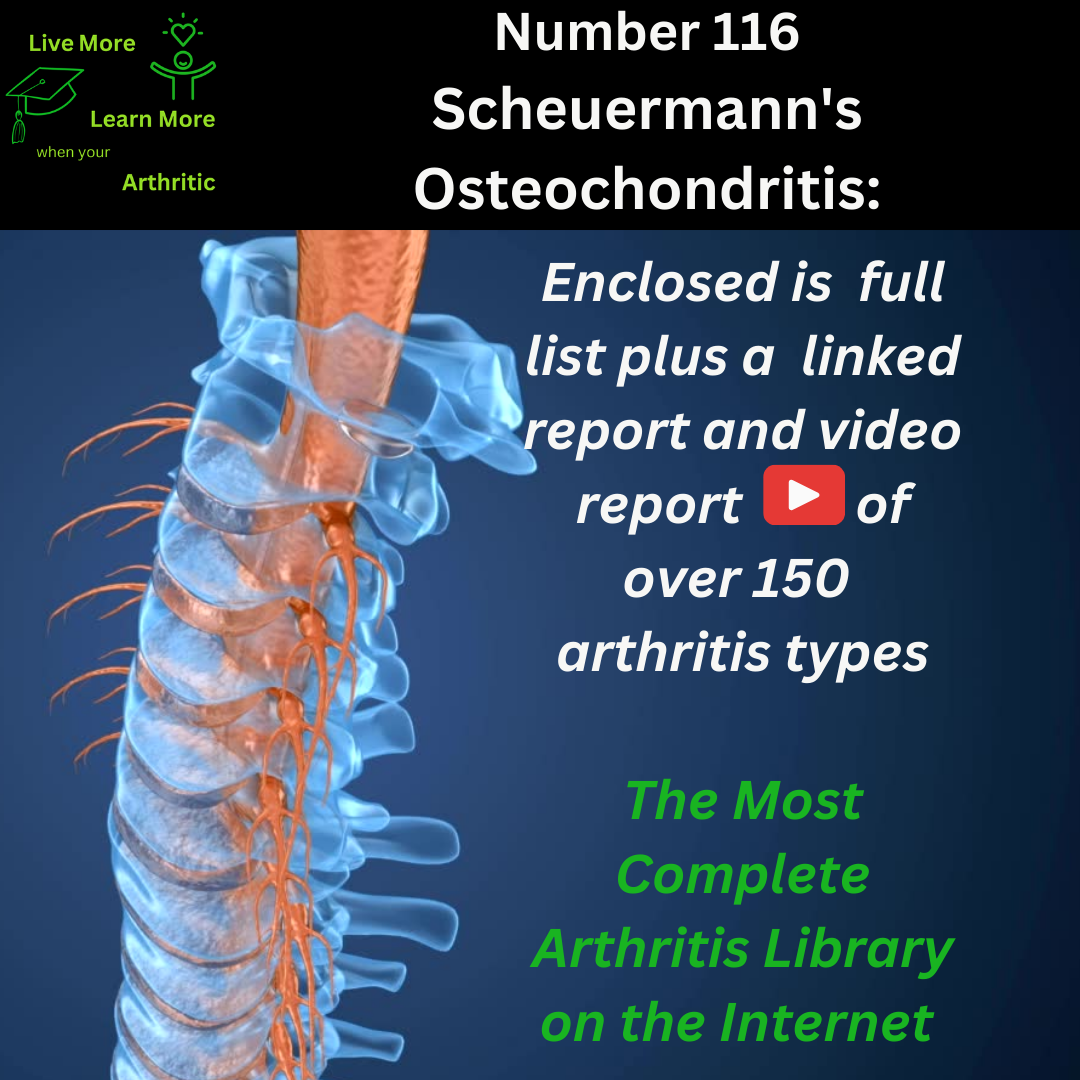
Scheuermann’s Osteochondritis: Number 116 of around 150 types of Arthritis
Understanding Scheuermann’s Osteochondritis
Scheuermann’s Osteochondritis, also known as Scheuermann’s disease or juvenile kyphosis, primarily affects the thoracic spine—the upper and middle part of the back—during adolescence. This condition can lead to a rounded or hunched back due to abnormal growth of the vertebrae. Let’s delve into the details of this condition and its impact on the body.
 Most Affected Areas and Symptoms
Most Affected Areas and Symptoms
The thoracic spine, comprising the vertebrae in the upper and mid-back region, is most commonly affected by Scheuermann’s Osteochondritis. During growth spurts, especially around puberty, the vertebrae can develop unevenly, leading to wedge-shaped vertebrae instead of the usual rectangular shape. This can result in a visible hunchback or kyphosis, along with symptoms like back pain, stiffness, and limited range of motion.
Description and Causes
Scheuermann’s Osteochondritis is a structural disorder of the spine where the growth plates of the vertebrae develop abnormally, causing them to wedge together. While the exact cause is unknown, it’s believed to be related to genetic factors. The condition is more common in families with a history of spinal deformities.
Triggers and Risk Factors
The condition often manifests during adolescence, typically between the ages of 12 to 16 years. Boys are more commonly affected than girls. Rapid growth during puberty may trigger or exacerbate the condition, especially in individuals with a family history of spinal disorders.
Complications and Impact
The most notable complication of Scheuermann’s Osteochondritis is the development of kyphosis or a rounded upper back. This can lead to chronic back pain, reduced flexibility, and even psychological distress due to changes in appearance. Severe cases may require surgical intervention to correct the spinal deformity and relieve symptoms.
Impact on Range of Motion
As Scheuermann’s Osteochondritis progresses, the affected vertebrae become increasingly wedged, leading to a limited range of motion in the spine. This can impair everyday activities and contribute to discomfort and stiffness.
Improving Quality of Life
While Scheuermann’s Osteochondritis cannot be cured, proactive management can significantly improve quality of life. Physical therapy and targeted exercises can help maintain flexibility and strengthen muscles supporting the spine. Postural exercises and ergonomic adjustments can also alleviate strain on the back.
Possible Complications
Apart from spinal deformity and associated pain, Scheuermann’s Osteochondritis can lead to complications such as nerve compression, which may cause radiating pain or numbness in the limbs. Chronic back problems can also increase the risk of arthritis in later life.
Individuals with Scheuermann’s Osteochondritis may be at a higher risk for other spinal conditions later in life, including degenerative disc disease and early-onset arthritis. Regular monitoring and appropriate lifestyle modifications can help mitigate these risks.
In summary, Scheuermann’s Osteochondritis is a developmental disorder of the spine that primarily affects adolescents. While it cannot be prevented, early intervention and proactive management can significantly enhance quality of life and mitigate potential complications associated with this condition.

